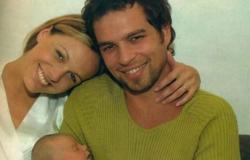12:02 PM
Sophia Vari died this Friday, May 5. The Greek artist, wife of the maestro Fernando Botero, died of ovarian cancer with which she had been fighting for several years. Vari was 83 years old.
From the age of 17 he decreed that he wanted to be an artist. That of expressing herself through art was with her since she was a child, although she ruled out that it was writing and the piano, which by tradition were in the lives of Greek women in the 40s, just the one in which she was born in Vari , Greece.
He met the maestro Fernando Botero at a dinner in Paris, where they talked about art in French. In fact, that was the language they used to talk about art and the daily life of two husbands who had been married for 47 years. “It was the most banal thing. I would like to find another way of saying it, more fun. We met at a meal. We started talking in French because I didn’t know a word in Spanish, I speak it very badly, now I defend myself. It was in Paris, something very classic, a dinner with a lot of people, a big table. I knew very little of his work, almost nothing. I first met the man before the great teacher and then a lot of time passed because I had problems to solve and so did he. He got divorced and so did I,” she said in an interview with EL COLOMBIANO in 2012.
She was a jeweler and a painter, but above all a sculptor. “Like all Greeks, I started with very classical painting, although sculpture is much more relevant in Greece than in Italy. Actually I was always a sculptor who painted and not a painter who made sculpture. I tried to learn how to draw very well, I went to museums a lot, looked at many books. I tried, indeed, to have a wealth of knowledge of all that is called high art. After a while, when I was already more organized and was in Paris and had the opportunity to access workshops, I started with sculpture. I have been in sculpture for many years, 20 or 25. There was a moment, after I started with equally figurative and classical sculpture, when I had a lot of respect for what has been done over time and I started with abstraction convinced that it gives the freedom that figuration does not. For me and my convictions of art, the composition of the volumes and the space, the harmony between them, made me feel a slave to figuration because it did not allow me that composition, that melody that I wanted with the volumes”, she explained in the same interview.
He liked the abstract. “I am very classical in technique, be it paint, watercolor or marble, I always handle it in a very classical way. And then, each aspect of my work has an atmosphere, an idea, a figurative emotion, which includes aspects of the moment, the attitude. Everything is with a very baroque way of doing things, with sensuality, which reveals the figurative part. That is what is important to me. I have an obsession with geometry and the composition of colors”.
According to a review in the Encyclopedia of the Bank of the Republic, “his work has been recognized in the trend of modern classical sculpture, with lines of abstraction and a facet of multiculturalism where he has captured different cultures around the world, especially the Greek culture”.
His work was exhibited in cities such as Paris, Monaco, Athens, Madrid, Geneva, Pietrasanta, as well as Cartagena, Medellín and Bogotá. In the capital of the country, he just presented the Pueblos de Colombia exhibition in 2015, in which he made representations of various Colombian towns that he visited in the company of the teacher Botero. They were collages in which he took up paper, cardboard, jute, cuts and veneers in wood and other materials.
He always accompanied the artist from Antioquia on his travels, which is why he was seen several times in these lands. She said that she felt very good about how they were received, it was a “very special thing”, her husband’s paisa was contagious. “I am very happy about this contagion. It has made a great impression on me because when we met 36 years ago I learned an incredible thing: how important it is to have such a love for her country. He truly has a deep love for his country, for his country, for Colombia. It has been a great lesson for me. Wherever he is in the world, be it Paris or Pietrasanta, despite the fact that he speaks several languages, he is completely Colombian with a Paisa accent”.
His sculptures were monumental, some exposed outdoors in cities like the ones already mentioned. About the jewelry he said that it was part of his work, he saw them as small sculptures that he made with silver and gold, which were the materials that he liked. either. This started like this because when I have the idea of a sculpture I take it out small, in dimensions that I can touch, intervene, correct. I have never changed the way of working. I make a small model. And it’s not just rings, it’s brooches, necklaces, everything. I make them for myself, the moment I see that I am missing something, a detail. Then the friends left craving. Many of these models have become monumental sculptures”.






